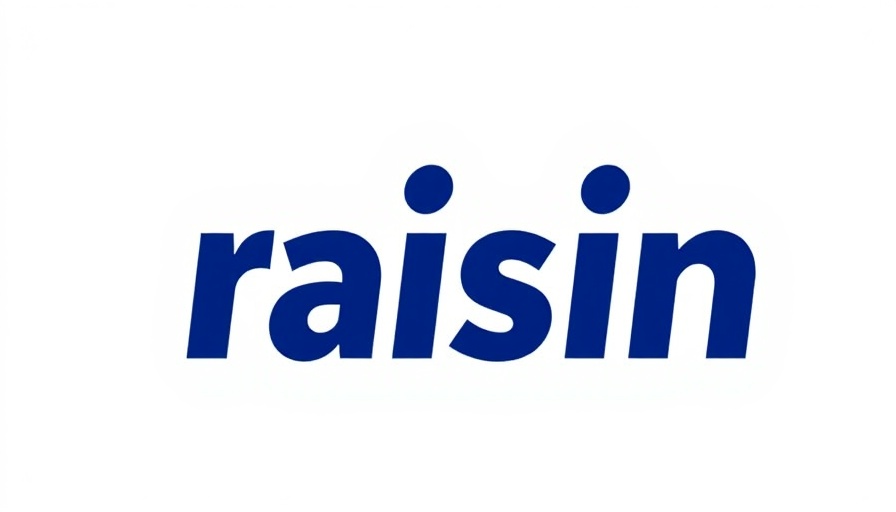
Understanding the Risks of Raisin Marketplace Deposit Bonuses
In a competitive marketplace for banking products, Raisin has emerged as a significant player, effectively simplifying the process of accessing high-interest savings accounts and certificates of deposit (CDs) through a single platform. However, recent deposit bonuses—up to $400—have sparked discussions about the actual utility and safety of utilizing Raisin, especially given its unique account structure. While the allure of fetching high interest rates is tempting, it is vital to consider the underlying mechanics and potential risks associated with Raisin's operational model.
What Are the Current Deposit Bonuses on Raisin Marketplace?
Raisin currently offers exciting promotions aimed at enticing both new and existing customers. New clients can earn a $250 bonus by opening an account with promo code GET250, provided they deposit $25,000 within 14 days and maintain that amount for 90 days. Existing customers can potentially gain up to $400, based on the amount deposited into new money. This money could yield varying bonuses depending on the term length of the CDs—$200 for a 3–6 month CD, $300 for a 7–11 month CD, and $400 for those committing to a 12+ month CD period.
Understanding Raisin's Structure: Benefits vs. Risks
Raisin operates as a financial technology company rather than a traditional bank, a distinction that is both a benefit and a potential pitfall. The platform allows customers to access competitive interest rates offered by various partner banks and credit unions without needing separate accounts for each. However, this is facilitated through ‘For Benefit Of’ (FBO) accounts managed by custodial banks, where client deposits are pooled together. The Central Bank of Kansas City acts as the service bank, overseeing these transactions.
This model, while providing elevated interest opportunities with minimal account-opening hurdles, raises significant risk factors. Should there be discrepancies in tracking deposits, as seen in previous banking incidents (e.g., those involving Juno or Synapse), customers could experience difficulties retrieving their funds. It's crucial to remember that while these arrangements are legal, they inhabit a regulatory gray area where protocols for client protection can be ambiguous.
The Beneficial Features of Raisin
One can't overlook the advantages that Raisin presents. The platform is praised for its user-friendly interface and tiered access to some of the best savings rates in the market. For eco-conscious consumers, particularly homeowners aged 30-65 looking to maximize savings for home value improvements, Raisin's accessibility to high-interest accounts can be a powerful tool. The convenience of managing multiple accounts from one dashboard streamlines the online banking experience significantly.
Comparative Benefits: Raisin vs. Traditional Banking Options
While noting the potential pitfalls of using Raisin, it's also important to compare these offerings with traditional banking choices. For example, CIT Bank's current deposit offer—a straightforward relationship with an FDIC-insured institution—creates a more robust safeguard against bank failures compared to Raisin's decentralized model. A significant difference lies in security; should a crisis arise, a traditional bank like CIT would engage the FDIC to mitigate customer losses promptly, whereas Raisin's structure could lead to protracted confusion if custodial issues arise.
Final Considerations: Is Raisin Worth It?
Ultimately, whether Raisin is the right option for you comes down to personal preference and risk appetite. High-yield accounts come with the promise of superior interest but carry the responsibilities associated with navigating a more complex banking ecosystem. If individuals can safely manage this complexity, Raisin could yield significant financial benefits. However, if factors like user accessibility and reliant structural safety are paramount, consumers might do well to seek out more conventional banking products. Before deciding on a path, it's advised that potential customers weigh these considerations against their individual financial goals.
Take Action Today!
The intricacies of utilizing a service like Raisin demonstrate the importance of understanding both the benefits and drawbacks. As the marketplace evolves, savers should remain informed and vigilant about where they place their funds. For those assessing their savings strategy, considering more straightforward deposit arrangements, like those offered by CIT, may prove more reliable in securing long-term savings growth.
 Add Row
Add Row  Add
Add 



 Add Row
Add Row  Add
Add 
Write A Comment